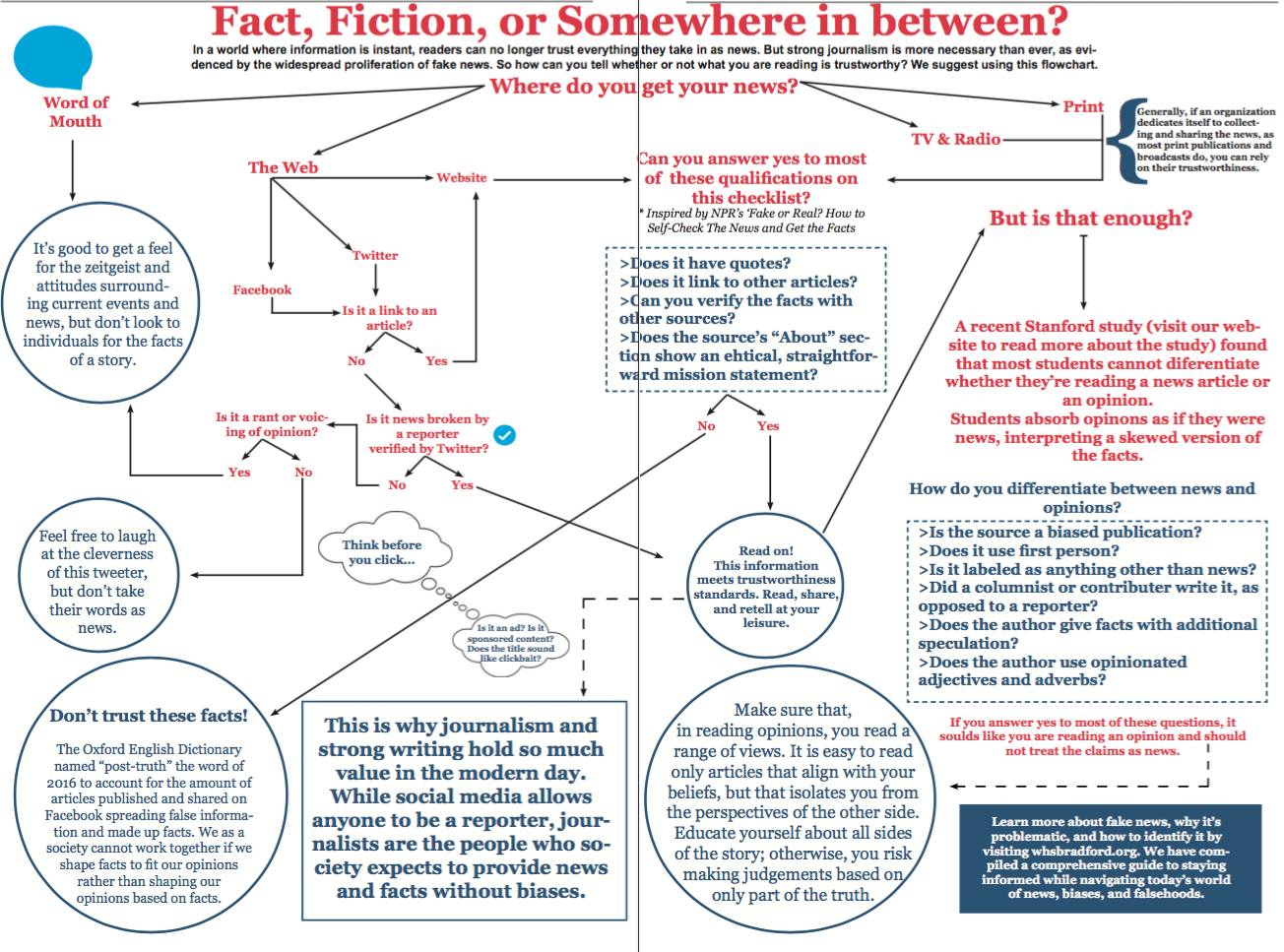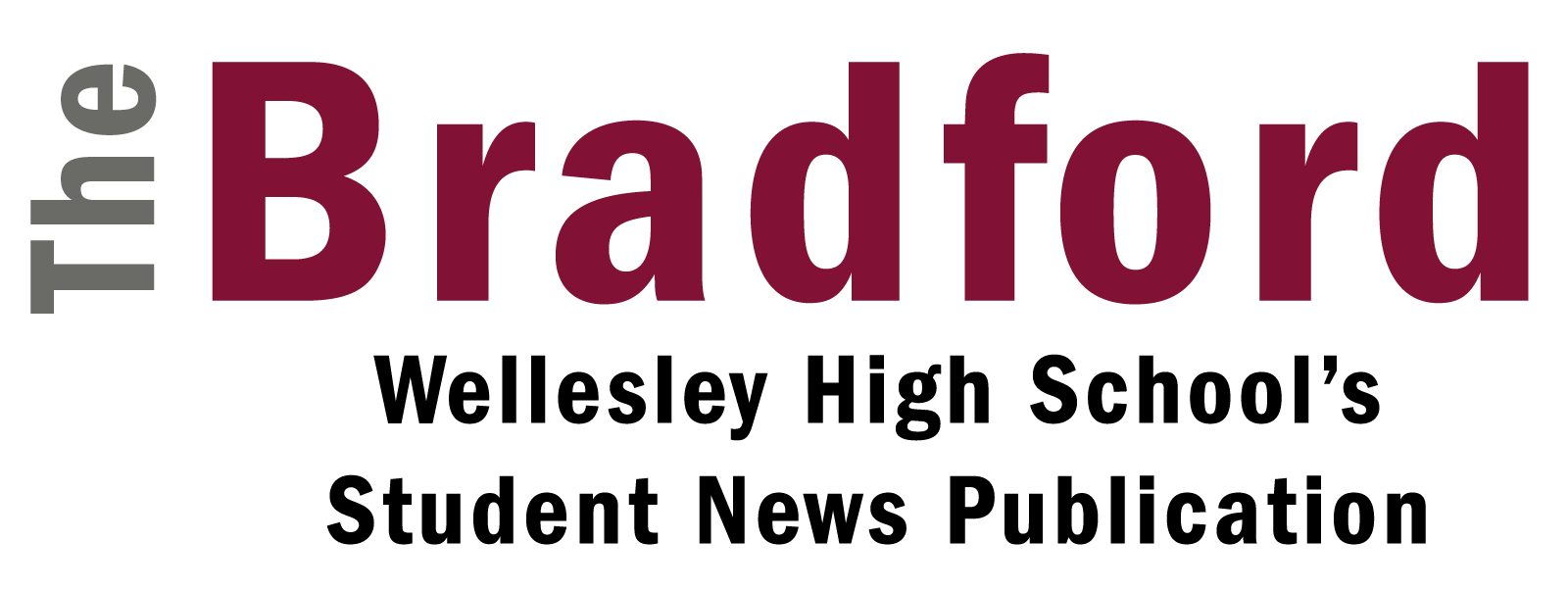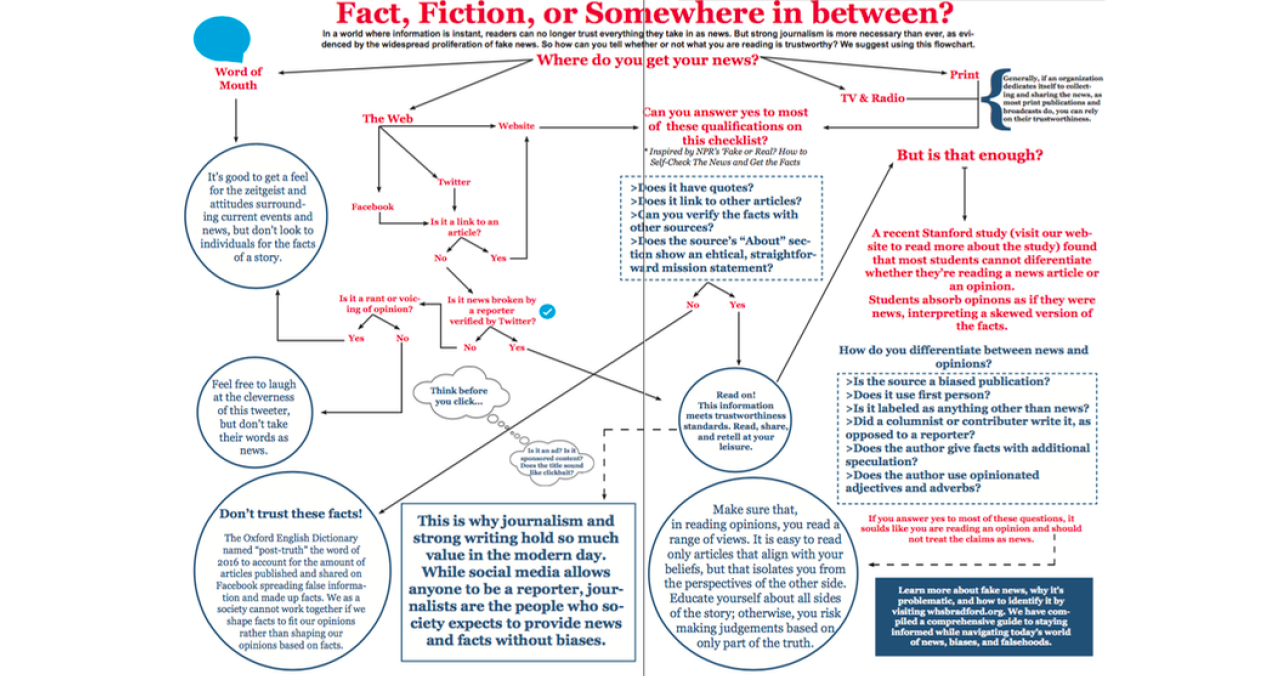As an expansion of The Bradford’s flow chart guide in the print edition, we’ve compiled a digital guide to help readers delve deeper into understanding which sources are trustworthy.

Want a longer fake news detection checklist?
-
- Facebook’s own “Tips to Spot Fake News”
- The News Literacy Project’s “Ten Questions for Fake News Detection” (Explore The News Literacy Project for more information and discussion of fake news and trustworthy sources)
What is a Post-Truth and why is it 2016’s word of the year?
- The Oxford English Dictionary explains why
Curious to learn more about the Stanford study discussing news vs. opinions differentiation?
How to find an unbiased source for news?
- Here’s a breakdown of which ideological groups find which sources unbiased
Still curious for more?
-
- Our advisor, Ms. Amanda Brown, unpacks the issue of learning how to navigate what is true and what is false in a comprehensive New York Times lesson plan
- The internet is exploding with tips, guides, and discussions of Fake News. A Google search will open up a world of analysis and conversation surrounding this issue– just remember to vet what you’re reading.


Tip #11
If the source of the news/information is corporate or government and it is aligned with corporate or government interests, question the news/information by researching non-corporate, non-government, non-aligned news/information. Ultimately you may conclude the corporate or government source is correct. What matters is the diversity of sources. No other method against “fake news” works.